

In Focus is Archinect's series of features dedicated to profiling the photographers who help make the work of architects look that much better. What has attracted them to architecture? How do they work? What type of equipment do they use? What do they think about seeing their work in blogs?
In this feature, we talk to German photo artist Josef Schulz.
Archinect: What is your relationship with architecture? What drew you to architecture, as a photographer?
Josef Schulz: If you consider architecture as the built entirety, then it has always been part of my work. It started with the examination of industrial and factory buildings.
Our day-to-day architecture tells a lot about us as a society, I try to process these topics in my work.
Describe how you work... who are your clients?
JS: My artistic work begins with an idea that I determine conceptually and visually before I begin with the photographic work, followed by a longer phase of image editing.
Client work is rather rare, it is mostly from architects or like in the latest case, a 'public art project' in Oslo for a water treatment plant. I like this kind of client work very much since they all require a completely different approach and deliver very different results.
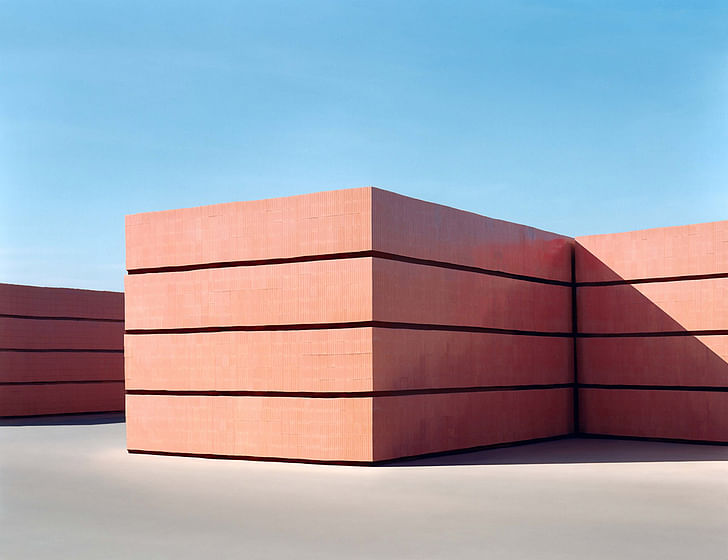
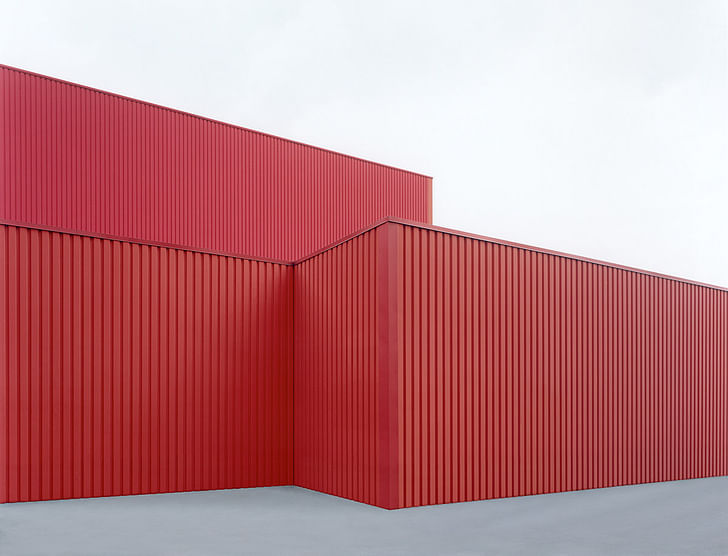
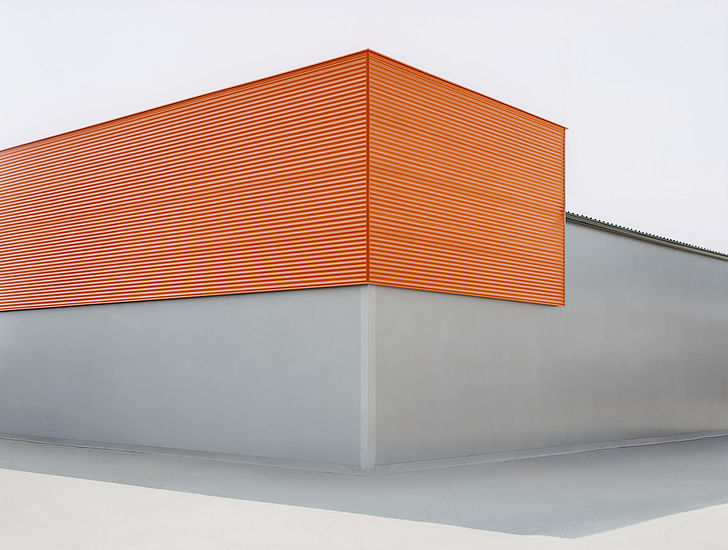
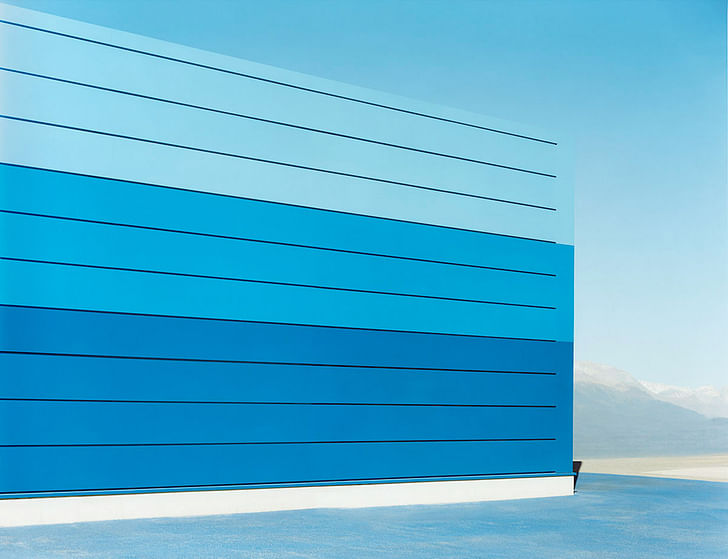
Do you mostly work in a specific region? What is your travel schedule like?
JS: Each of my series has a local connection, the idea predetermines the place. The series "übergang" ("crossing") required the most extensive traveling, for this, I traveled the better part of the European borders, I covered several ten thousands of kilometers.
So far, I have mostly photographed in Europe and in the United States.

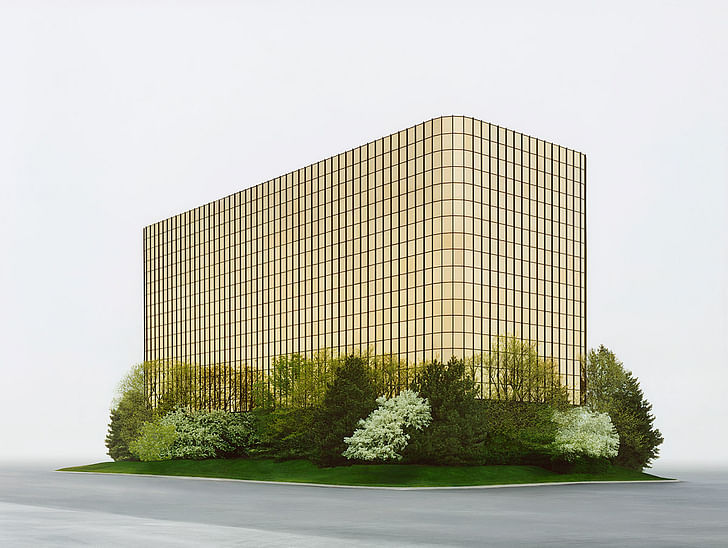

What is your goal when capturing buildings in photographs?
JS: That sort of depends on the particular series, in "sachliches", the focus is on formal aspects, in "übergang" however, the object's narrative presence is clearly more important.
What are your thoughts about including people in your photos? Is it important to photograph a building in use, or by itself?
JS: I typically avoid people in my photos because the observer's focus will immediately be drawn to the person to put it in relation with the surrounding area. I am, however, much more interested in the presence of the place.


What are your favorite pieces of equipment?
JS: I usually work with Arca Swiss large format cameras, preferred 4x5, rather seldom 8x10". Digital cameras I only use for sketches. I won't rule out a digi back for large format in the future though.
Do you work alone?
JS: On my travels, I am mostly alone, but I occasionally request help with longer projects for the post production, but this is more limited to minor supporting tasks.
How do you feel about seeing your photographs on blogs and websites?
JS: I am okay with my work appearing in blogs, as long as they are rather non-commercial and clearly indicate my name. In general, there is still a lot of catching up to do here with solving the issue of copyrights.




Josef Schulz:
1966 - Born in Bischofsburg, Poland
Lives and works in Düsseldorf, Germany
Education
1999-2002 - Düsseldorf Academy of Art (Prof. Thomas Ruff); Graduated in 01/2002 (Meisterschüler)
1993-1999 - Düsseldorf Academy of Art (Prof. Bernd Becher)
1987-1992 - College, Düsseldorf, graduated as business economist
Awards, Grands, Projects
2010 - Artist exchange: Düsseldorf - Moscow House of Photography
2009 - Public Art Project, Oset Water Treatment Plant, Oslo
2007 - Grant of the ZF-Kulturstiftung Friedrichshafen
2005 - Winner of the Festival „Voies Off“ de Recontres d Arles, Arles, (F)
2002 - Grant of the Stiftung Kunst und Kultur des Landes NRW (D)
2001 - Winner of the db Architekturbild; European Architectural Photography Prize 2001 (1st Prize)
2000 - Winner of the Kodak und Large Format Inkjet Award
For a list of selected solo and group exhibitions, please see Josef Schulz' website.
1 Comment
This is Los Angeles morning and while coffee we are stopped in our tracks by an immediate visual stimulation of your design - it is somehow so Los Angeles - straights t forward function and form of powerful simplicity - expression of art and design - I think "American way " - artist, business person, entrepreneur , investor - and I think you belong here - we must connect you - I will assert my creation and connection to see if we can emerge something - are you from Poland ? Regards Eva Gajewska- Blaisdell
The selection of found architecture is what this is mostly about. Either buildings with graphic 'compositions' as an integral part of the work, or as sculptural-like objects, usually small from what I see. The photographic choices are more along the line of matter of fact pov documentation than applied artist(ic) composition.
eric chavkin
Block this user
Are you sure you want to block this user and hide all related comments throughout the site?
Archinect
This is your first comment on Archinect. Your comment will be visible once approved.